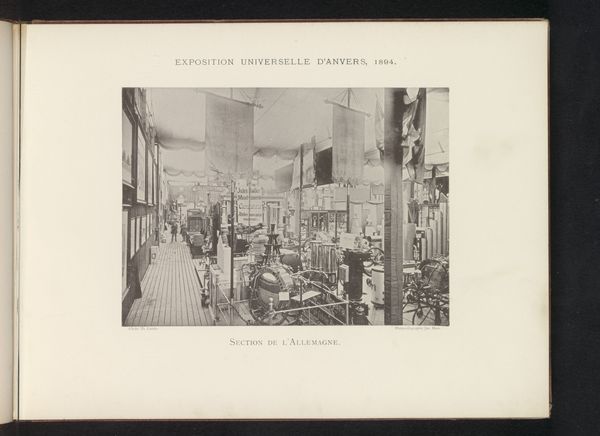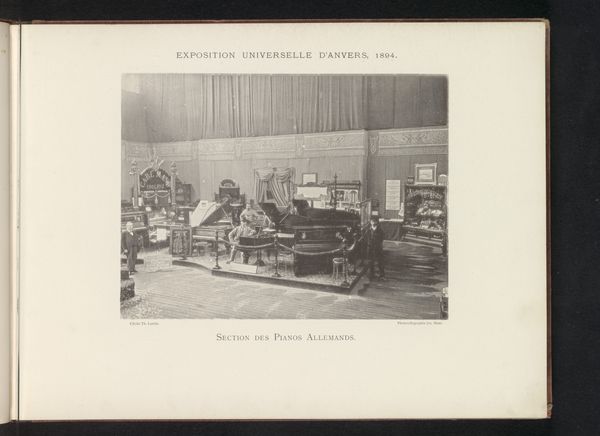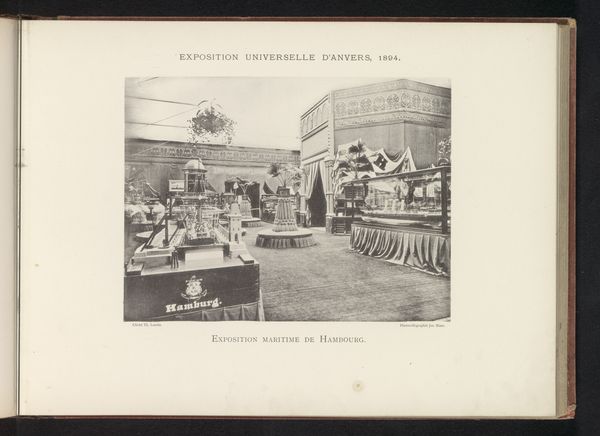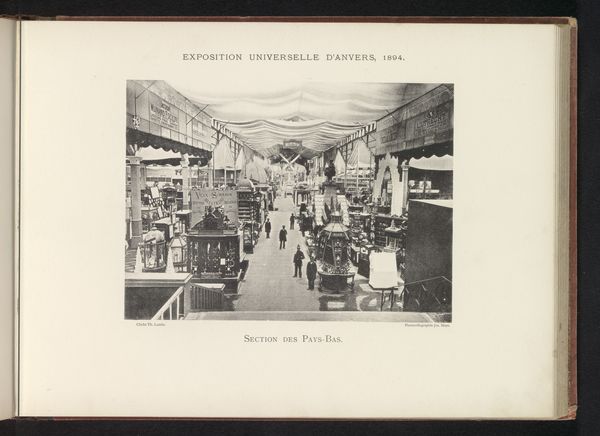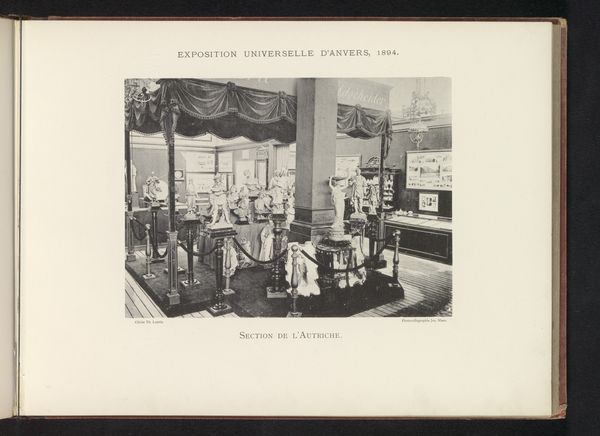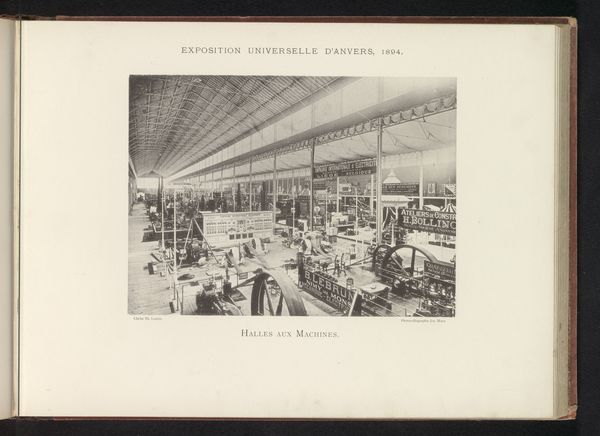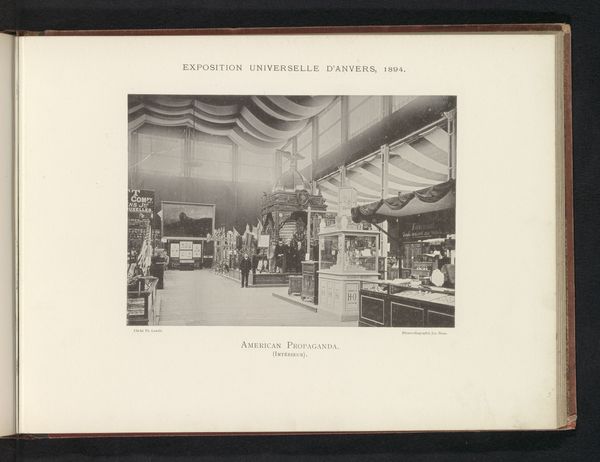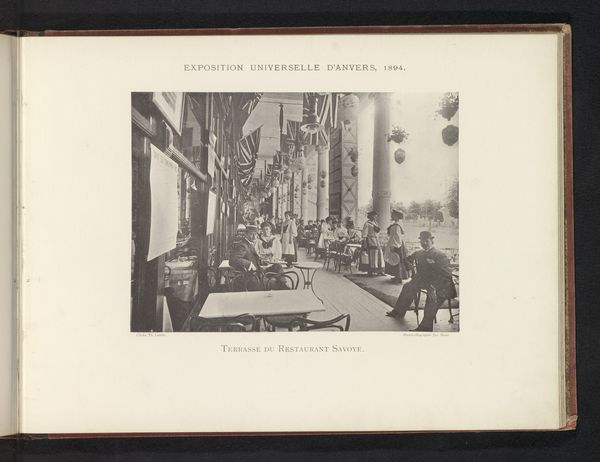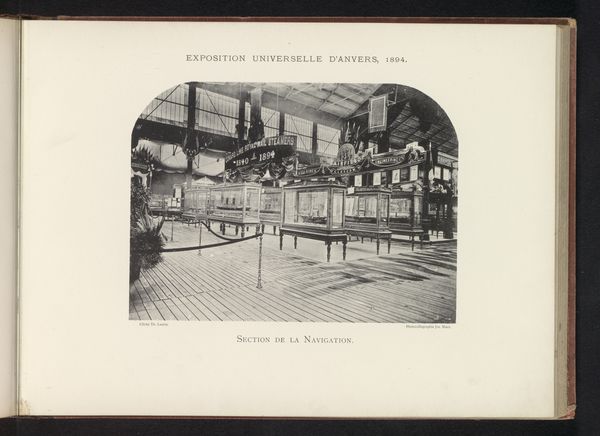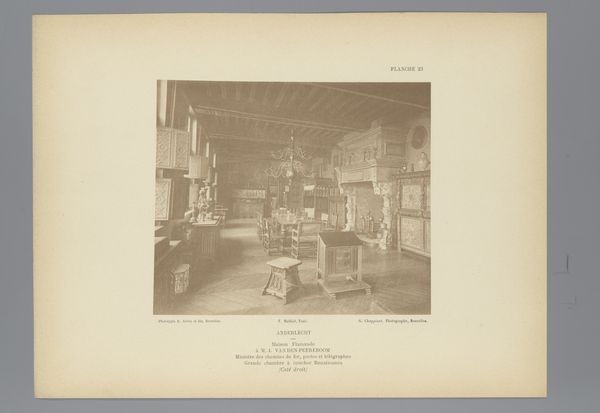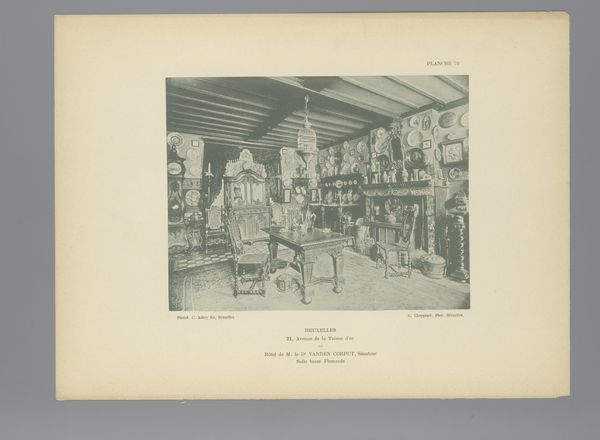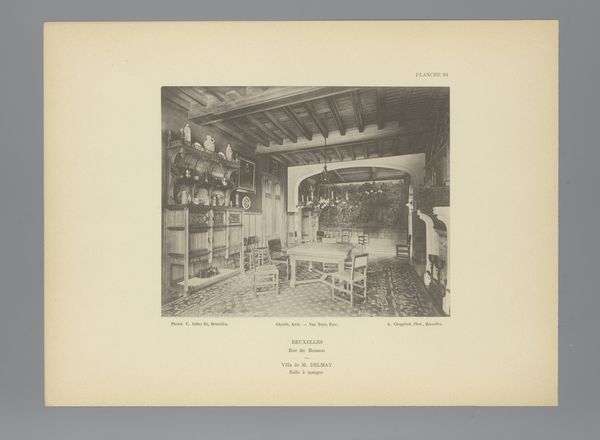
Meisjes en vrouwen in een atelier van de huishoudschool tijdens de wereldtentoonstelling te Antwerpen 1894
0:00
0:00
Dimensions: height 161 mm, width 220 mm
Copyright: Rijks Museum: Open Domain
Curator: Ah, here's a piece that really stops me in my tracks: "Meisjes en vrouwen in een atelier van de huishoudschool tijdens de wereldtentoonstelling te Antwerpen" – Girls and women in a household school workshop during the world exhibition in Antwerp, a gelatin silver print from 1894, snapped by Th. Lantin. What catches your eye? Editor: It feels like stepping back in time, doesn't it? The muted tones create such a wistful, almost sepia-toned memory. A quiet, industrious scene. Curator: Indeed. It presents us with a fascinating glimpse into the domestic education offered to women at the end of the 19th century, a very gendered view of education. Notice how it positions women and girls within very particular parameters. These World’s Fairs were carefully constructed displays, you know. What is shown, and what is not shown, becomes incredibly important to deconstruct. Editor: Exactly. What skills were they meant to acquire? And what opportunities were therefore available to them? But beyond the overt messages, there's this sense of camaraderie too, all these young women learning and creating together. There is so much more going on here, not only craft work. A sisterhood and friendship between women and girls in a structured learning environment is being offered. Curator: The photograph employs an impressionistic style. It captures a moment, a sense of fleeting reality within that meticulously arranged setting, wouldn’t you agree? Lantin used light and shadow not just to illuminate, but to almost… romanticize the domestic sphere, or maybe the photographic printing method makes me think that. It’s as though this school is being shown off for the whole world to be inspired by it. Editor: That's a potent tension, the contrast between that intentionality and the genuine, unscripted moments you perceive. The photograph speaks volumes, both for what it depicts explicitly and the underlying power structures and gendered expectations it inadvertently reveals. The work offers insights into not only this historic event, but our assumptions of its past and the potential possibilities and lives of its protagonists. Curator: Precisely. The more I gaze upon it, the more narratives unfurl. Editor: It lingers, this image. Making us consider women’s labour, its depiction, and legacy today. It asks us to examine how little, and yet how very much, has changed.
Comments
No comments
Be the first to comment and join the conversation on the ultimate creative platform.
